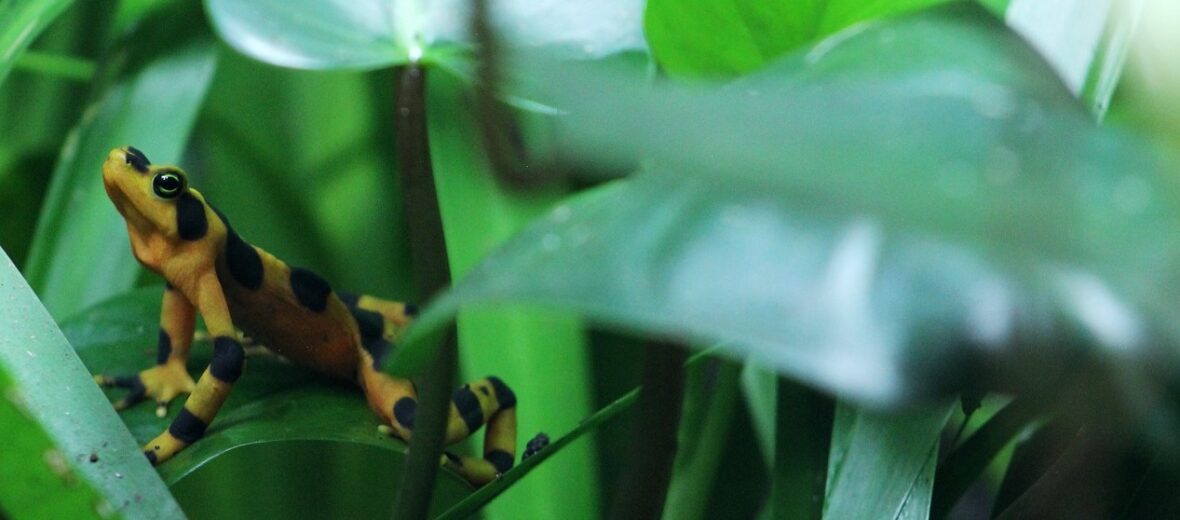
Representing good fortune, the Panamanian golden frog from the rainforests of Central America is Panama’s national animal. Their picture is on everything from magazines, to posters, to T-shirts, to lottery tickets. Sadly though, these frogs have been faced with all kinds of adversity. Everything from being taken from the wild for sale in pet stores, brought into tourist attractions for display, taken into homes for good luck, to facing their biggest threat… their inevitable extinction at the hands of a lethal chytrid fungus known as Batrachochytrium dendrobatidis, a nonhyphal zoosporic fungus. They are now thought to be extinct, or at least functionally extinct, from the wild.
First the Stats…
Scientific name: Atelopus zeteki
Weight: Up to .4 ounces
Length: Up to 1.9 inches
Lifespan: Up to 12 years
Now on to the Facts!
1.) Their bright colors warn predators of the toxins present in their skin.
2.) These frogs communicate via hand waving and short chirps that they hear, not with their ears, but rather with their lungs!
3.) When agitated, their longest toes will shiver.
4.) Insects and other small invertebrates make up their diet.
5.) Fish, birds, and snakes are the main predators of these frogs.
But wait, there’s more on the Panamanian golden frog!
6.) Mating season takes place from November – January.
7.) The male signals his intent for some lovin’ by waving his arm and emitting short chirps.
Did you know…?
Their wild population is now considered extinct due to over collecting and the deadly chytrid fungus that has wiped out approximately 40% of the world’s amphibian population!
8.) The male fertilizes a long string of up to 900 eggs which are later hidden under rocks, in the water, to protect the eggs from direct sunlight.
9.) Like most other amphibians, there is no parental care. The eggs are left to the fates.
10.) Tadpoles hatch from the eggs after about 9 days. They metamorphose into froglets after 6 – 7 months.
Now a Short Panamanian Golden Frog Video!
Also, check out the Critter Science YouTube channel. Videos added frequently!
Want to suggest a critter for me to write about? Let me know here.



